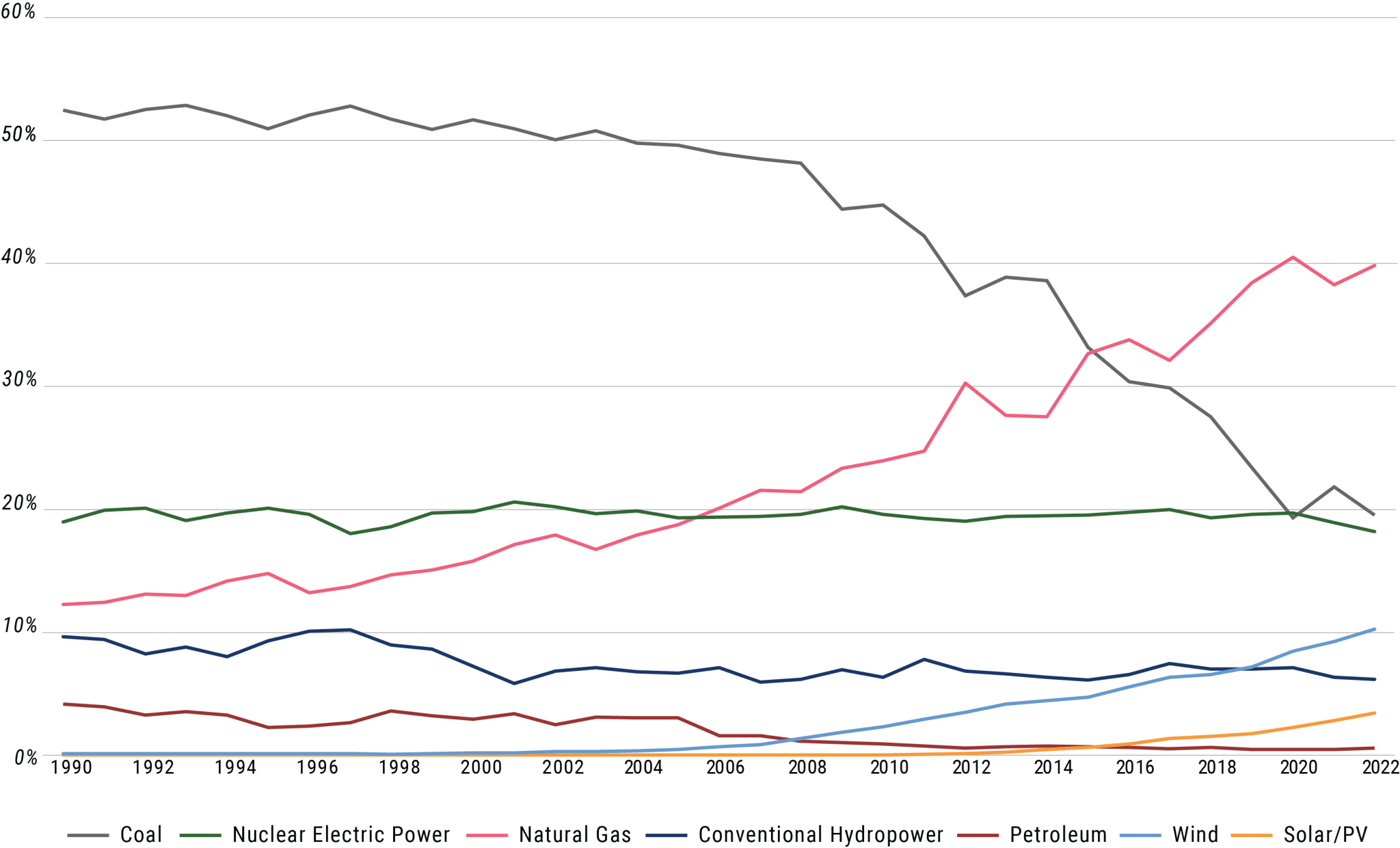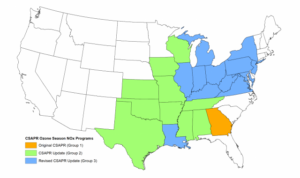Existing Power Plants
EPA has previously issued greenhouse gas regulations under Section 111(d) of the Clean Air Act for existing power plants, but these rules have not gone into effect. Section 111(d) allows EPA and the states greater flexibility in crafting and implementing a standard.
In April 2024, the U.S. Environmental Protection Agency (EPA) finalized greenhouse gas standards and guidelines for existing coal-fired steam generating units, and repealed the Affordable Clean Energy (ACE) Rule. These carbon pollution standards will be phased in over time and are based on how long these plants intend to operate to give plant operators adequate time to plan and install controls to limit carbon dioxide emissions.
- For units that plan to operate beyond 2038 (i.e., “long-term” units), the rule will effectively require installation and operation of carbon capture and storage (CCS) technology to achieve emission rate limits.
- For units that plan to retire before the end of 2038 (i.e., “medium-term” units), the rule recognizes that CCS would be less cost-effective and will have an emission rate limit based on co-firing with 40 percent natural gas, beginning in 2030.
- Units that plan to retire before 2032 are unaffected.
States will have the ability to provide an alternative standard for individual plants that have fundamentally different circumstances than those considered by EPA and that cannot reasonably achieve the required emission reductions.
EPA did not finalize the rule for existing natural gas-fired power plants, and indicated they will take additional time to consider and develop a comprehensive approach to include criteria pollutants and air toxics.
In May 2023, EPA proposed new greenhouse gas standards for existing coal and natural gas power plants, and would repeal the Affordable Clean Energy (ACE) Rule. Based on public comment and feedback, EPA made key changes from the proposed rule to: truncate the number of subcategories to “long-term” units and “medium-term” units, provide an application exemption for units that cease operations before 2032, and extend the compliance deadline for CCS-based standards to 2032 from 2030 (to match the same date as the rule for new power plants).
In January 2021, the U.S. Court of Appeals for the D.C. Circuit vacated the ACE Rule and remanded it to EPA. The appeals court ruled that EPA misinterpreted the Clean Air Act when crafting the ACE Rule as a means of regulating greenhouse gas emissions from power plants. The ACE rule was sent back to EPA, which finalized a new rule in April 2024 that includes repealing the ACE Rule.
The 2019 ACE Rule would have required existing coal-fired power plants to use prescribed technologies to improve their heat rate (i.e., increase efficiency), as a best system of emission reduction (BSER) for regulating carbon dioxide emissions. The ACE Rule was not expected to reduce power sector emissions. The ACE Rule was supposed to replace the 2015 Clean Power Plan, which set state-specific emission rates and provided various market-based flexible compliance provisions to reduce carbon dioxide emissions from existing power plants.


